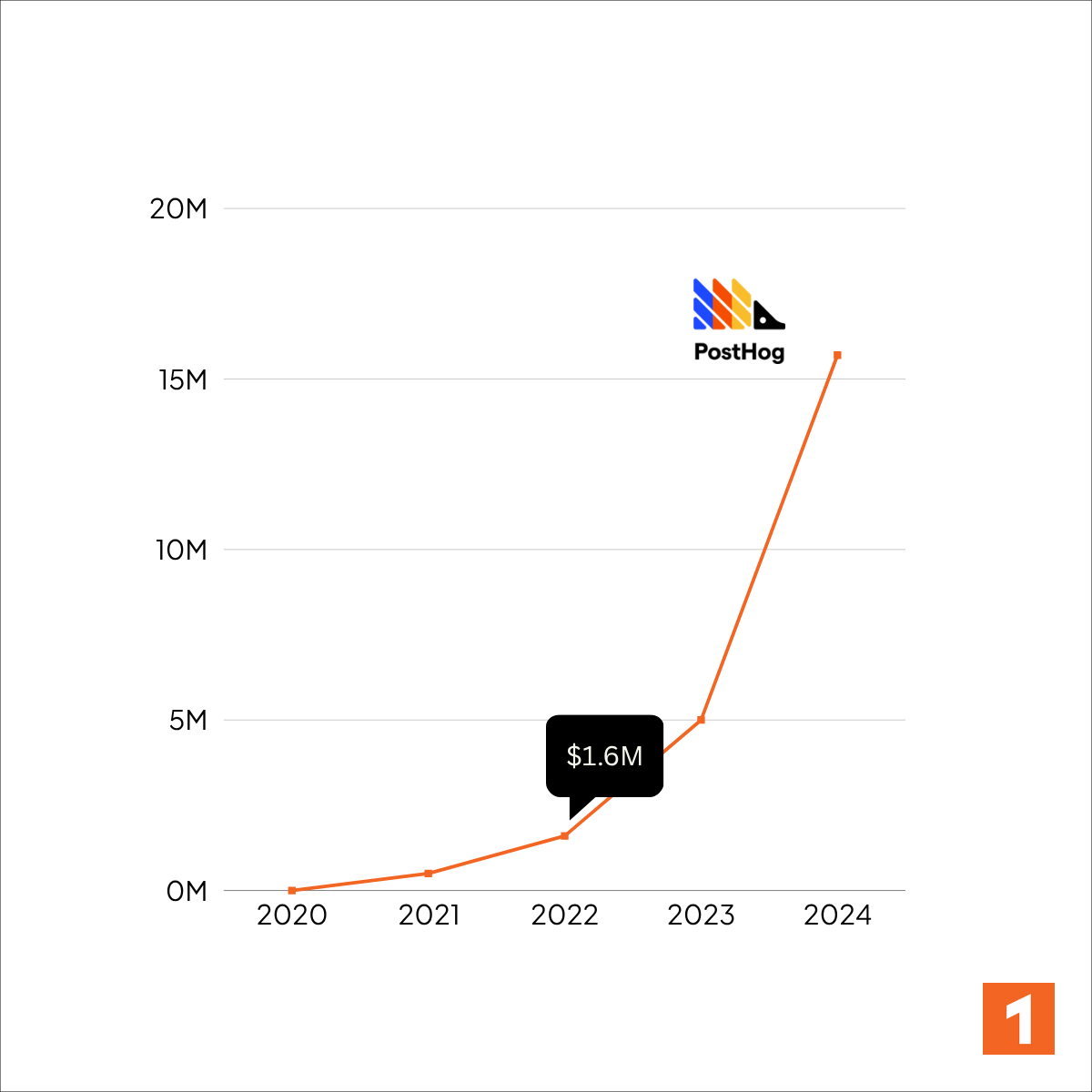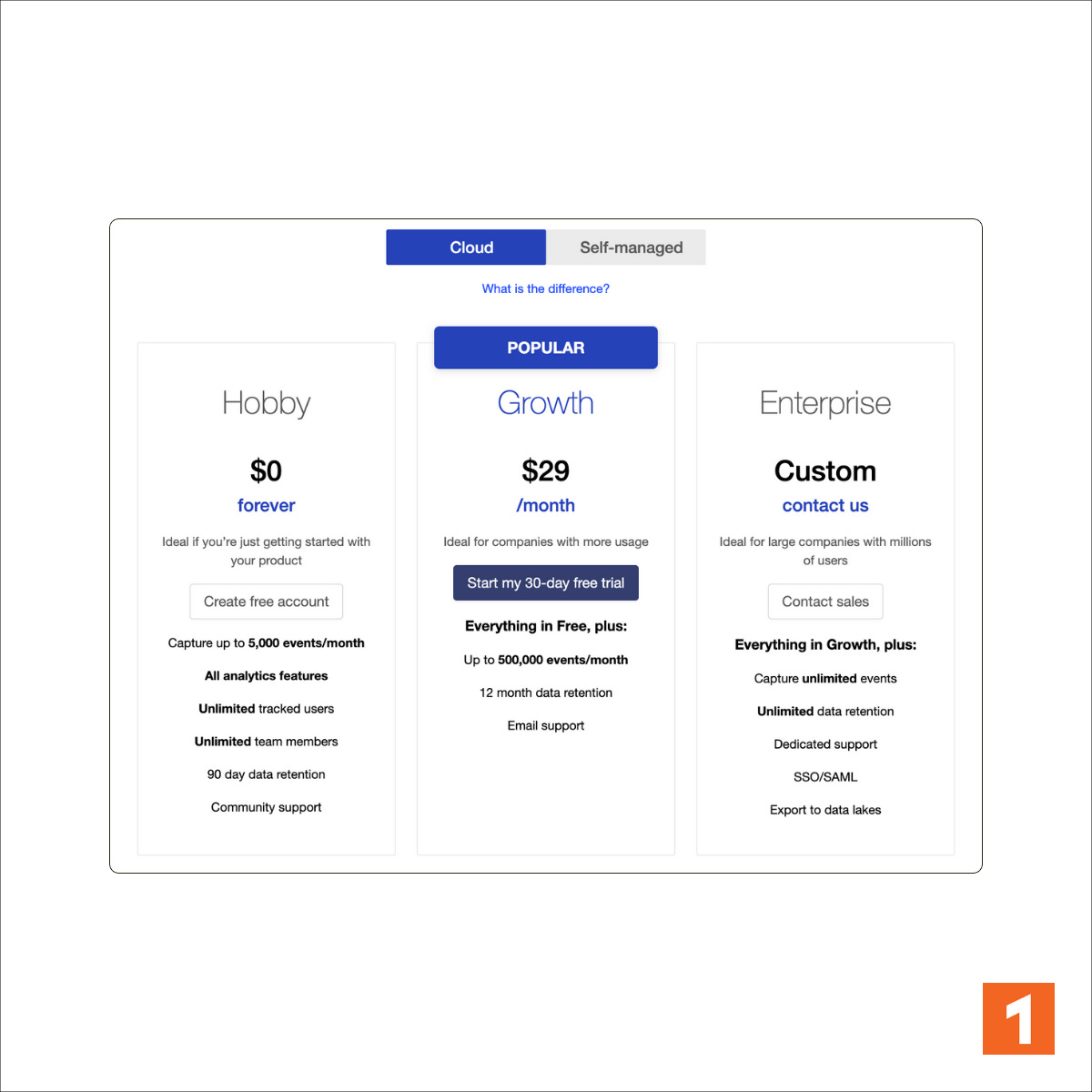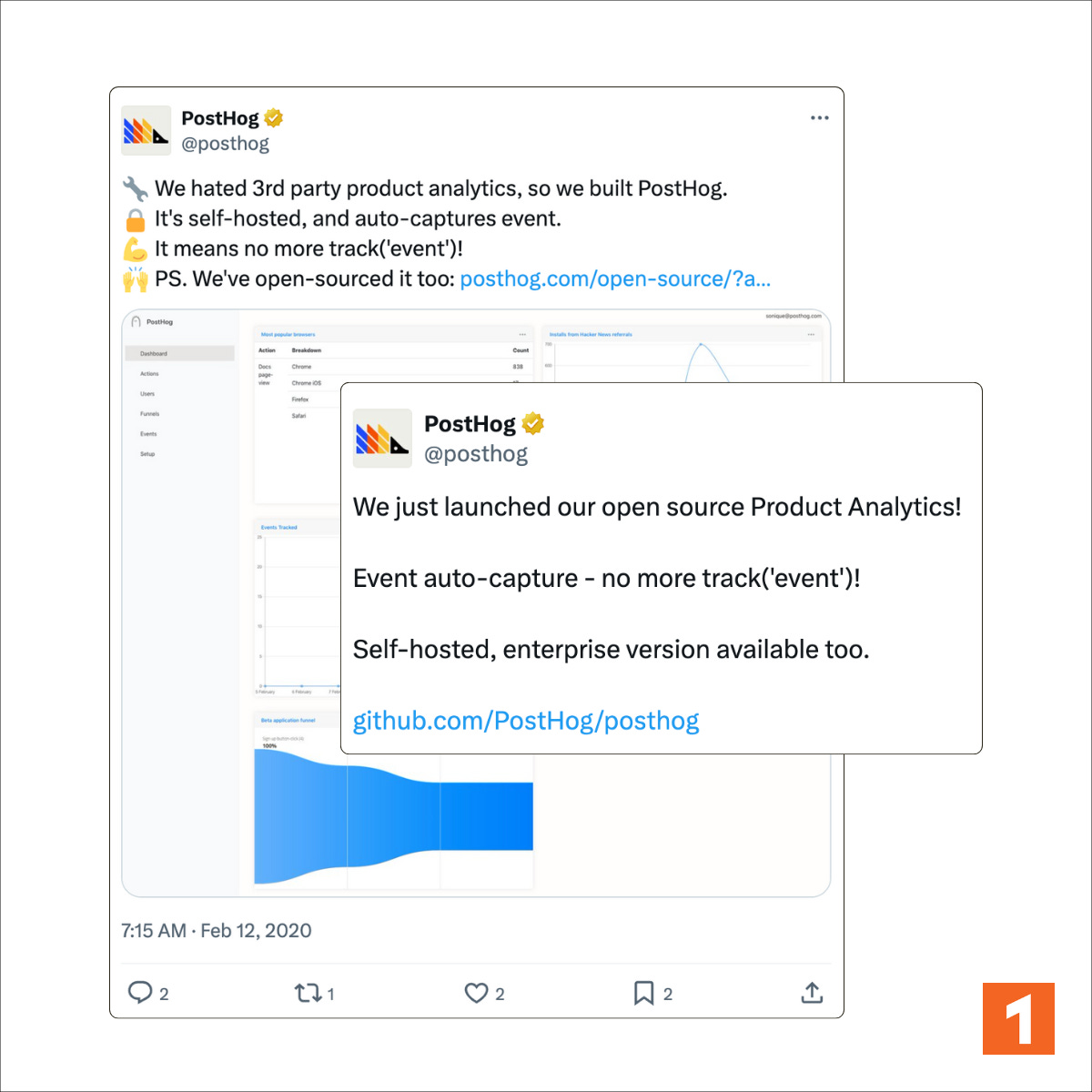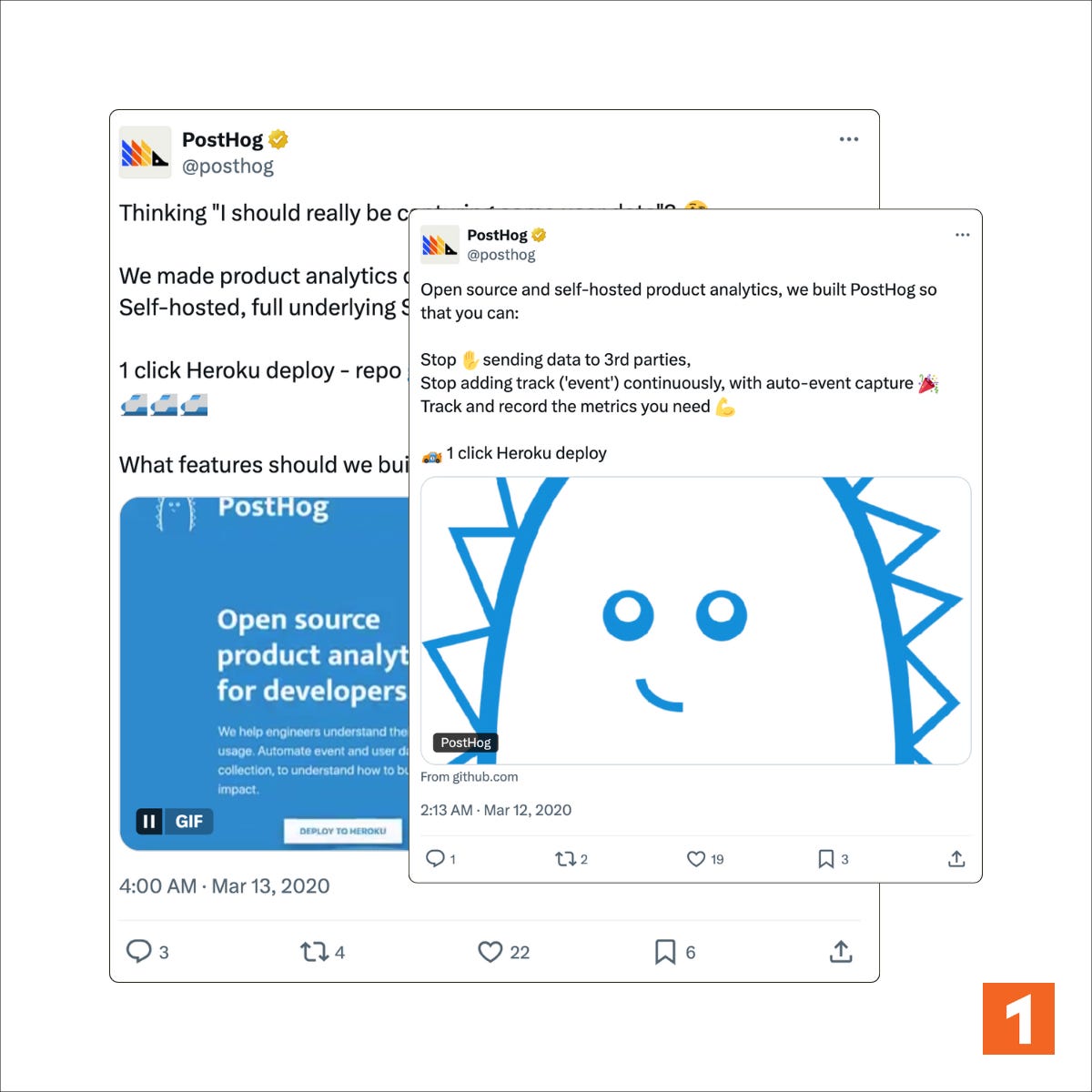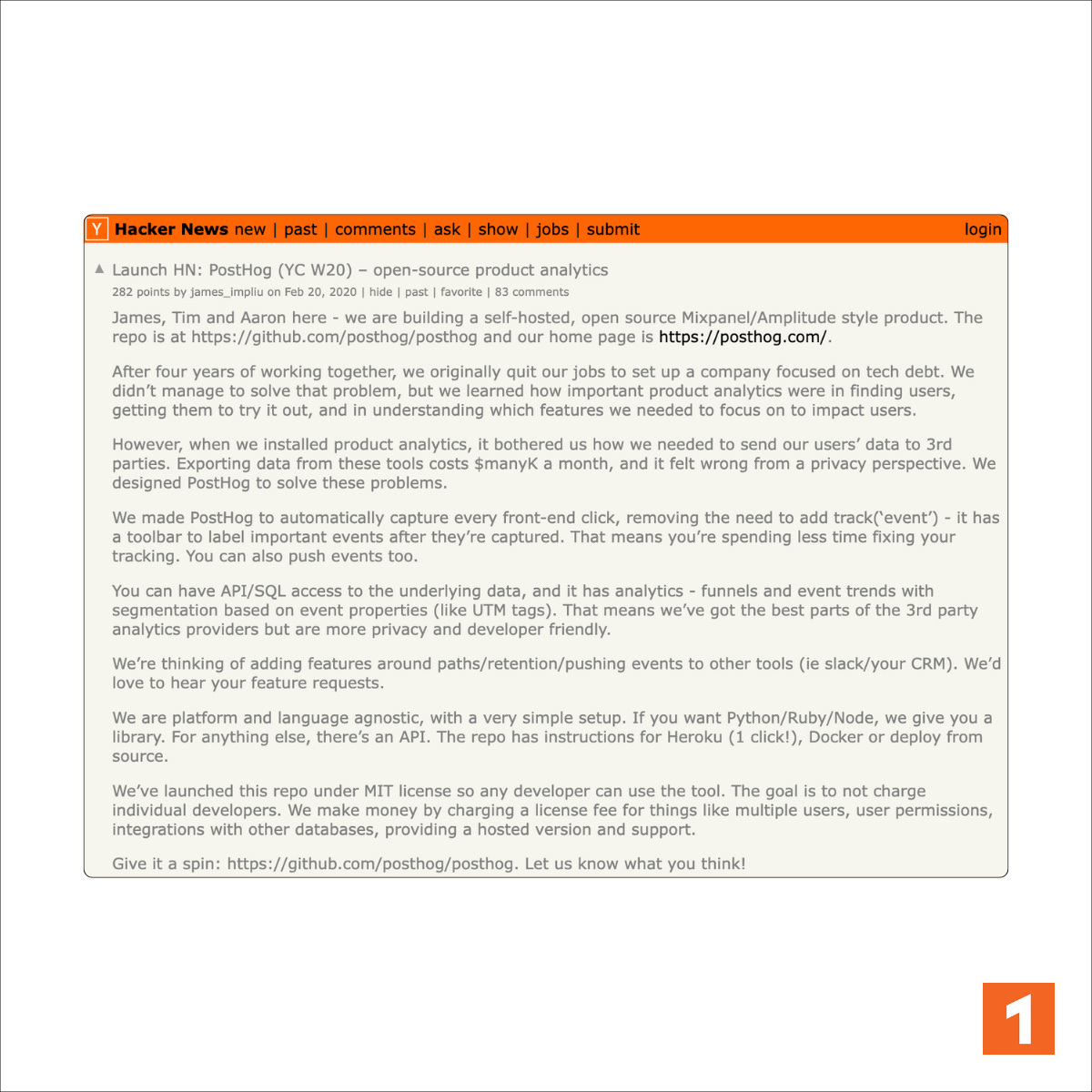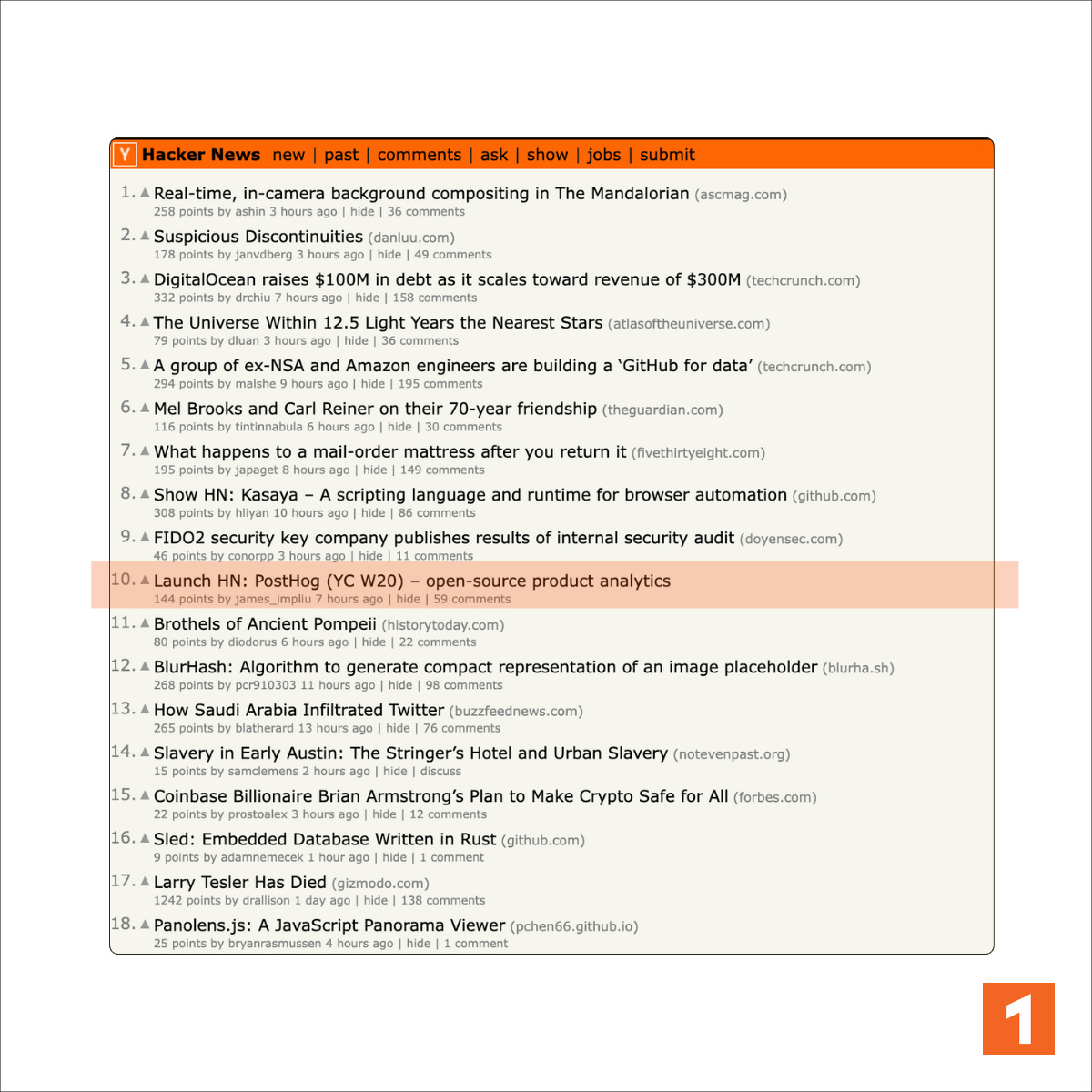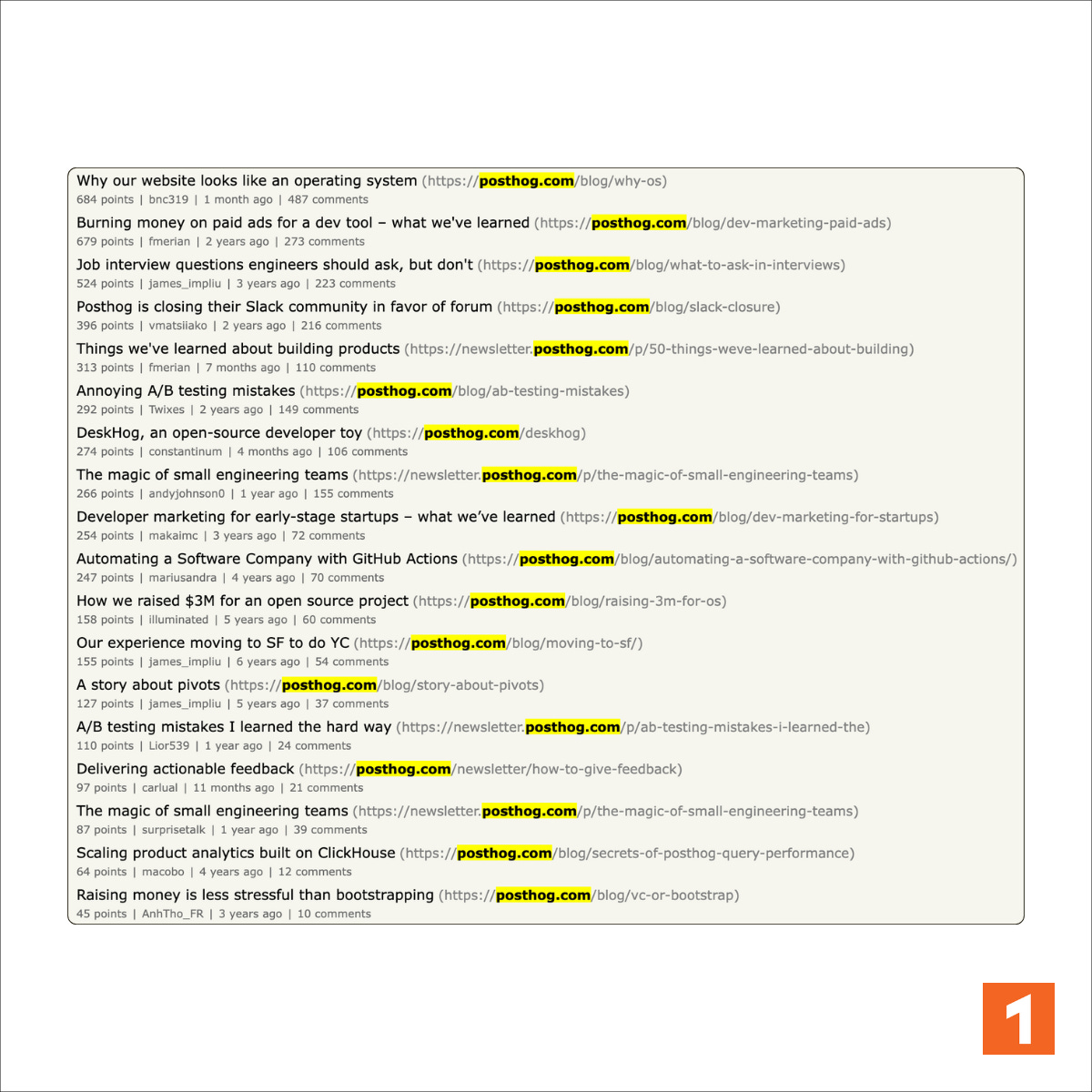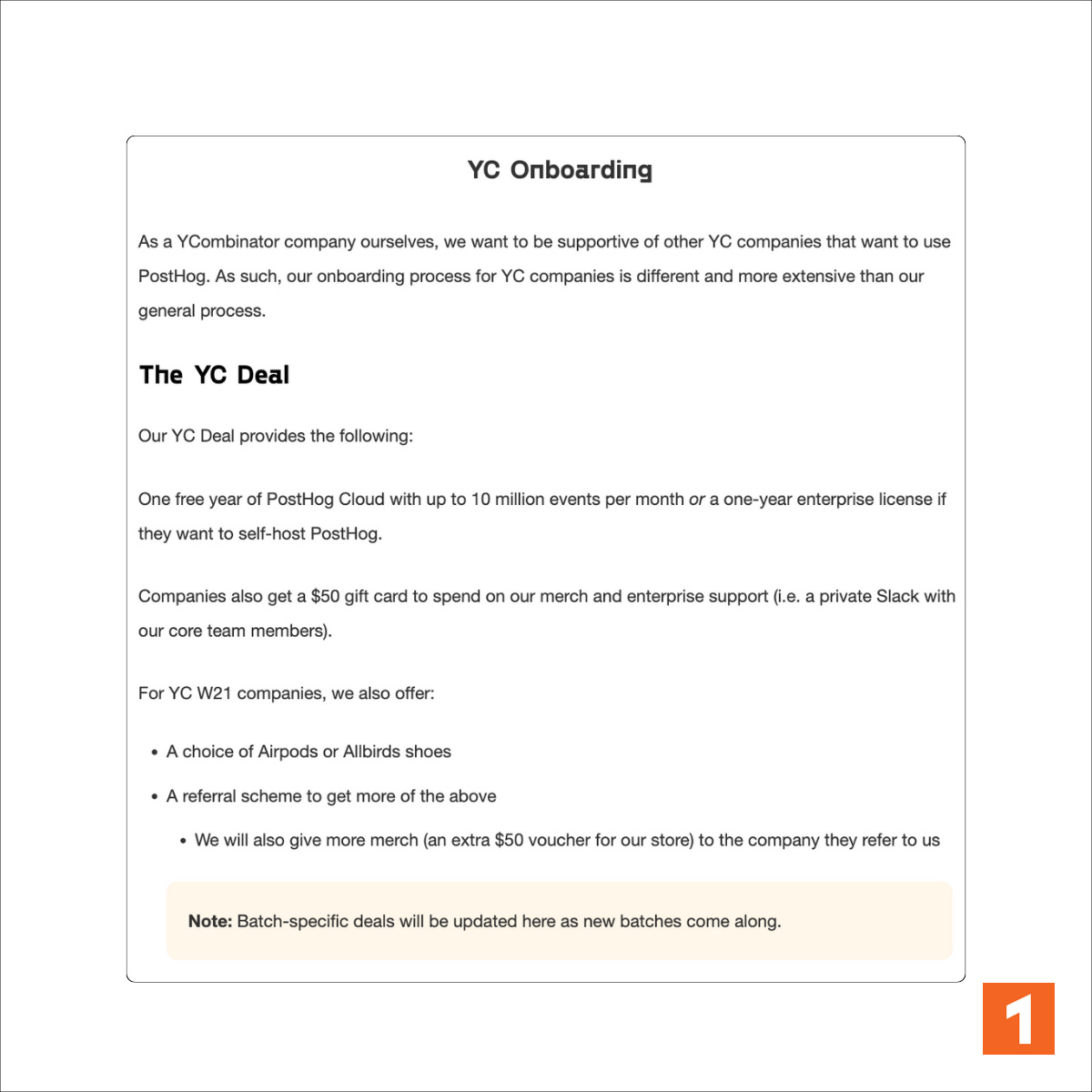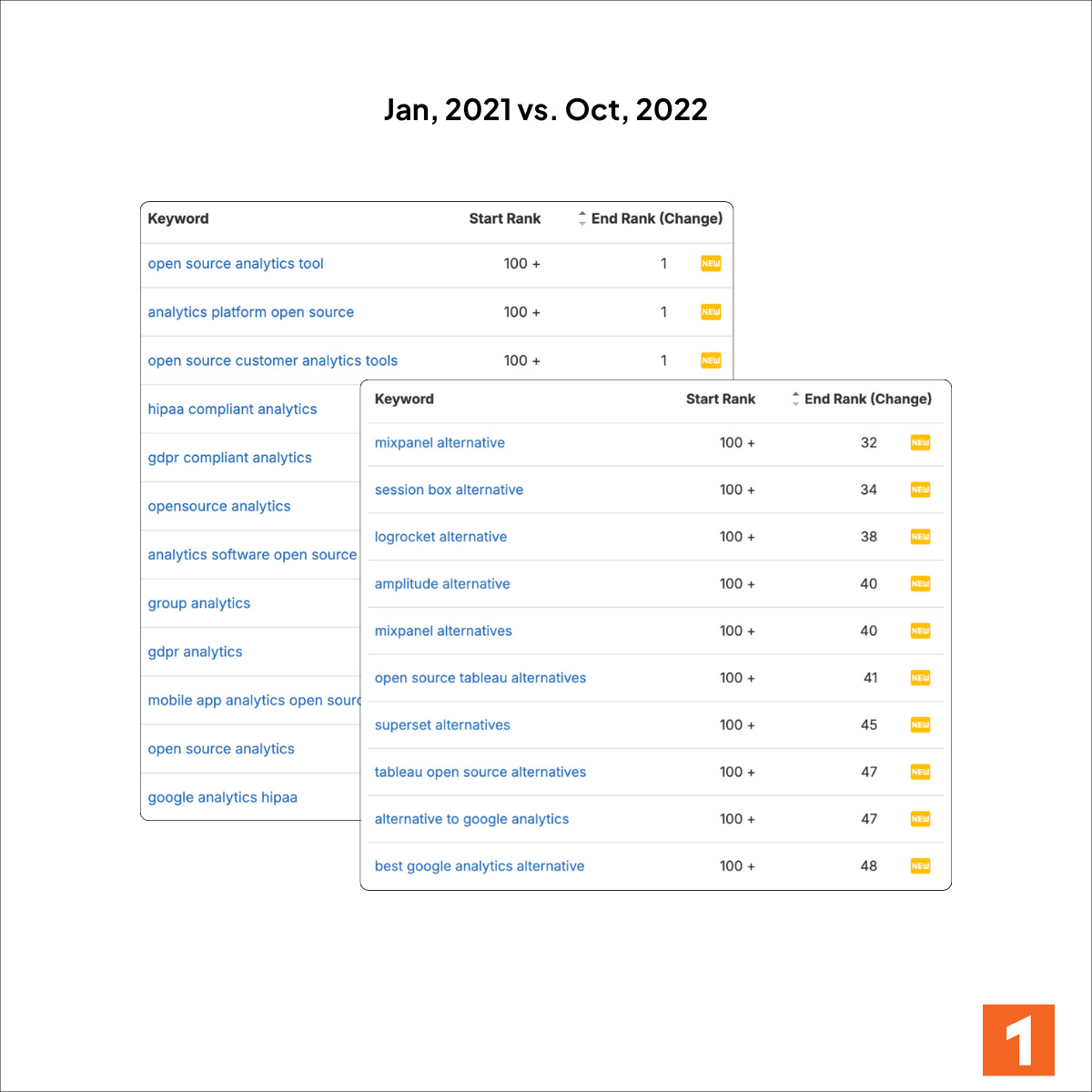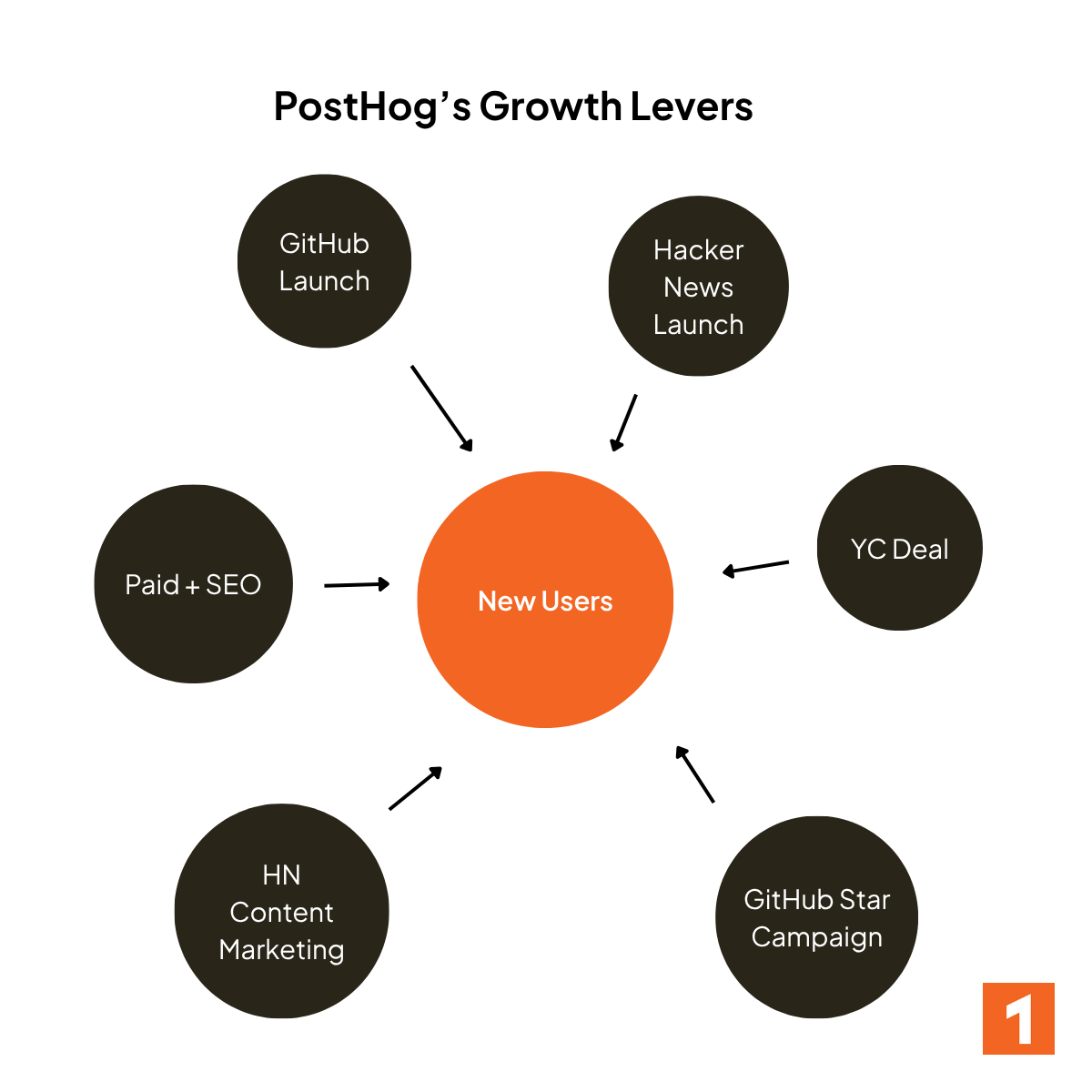PostHog's First Million Story
From five failed ideas to $1 million ARR — the open-source story that clicked.
Hey, it’s Elan. Welcome to my newsletter on what worked for SaaS startups that reached their first $1M in ARR. If this is your first time here, sign up and be the first to read future posts.
This week, I’ve covered PostHog, one of those rare startups that found success not by getting everything right, but by pivoting fast and betting on open source.
In this edition of First Million Story, I’ve broken down how PostHog used open source as their growth lever and hit their first $1 Million ARR in two years.
Let’s dive in.
About PostHog
PostHog is an open-source product analytics platform that helps product engineers build successful products. It was the founders’ sixth idea, a pivot they made after joining Y Combinator’s W20 batch.
PostHog launched in February 2020 as an open-source project on GitHub and Hacker News, gaining immediate traction among open-source enthusiasts.
Within two years, PostHog crossed $1 million ARR by October 2020, entirely through inbound growth and without a sales team.
Today, the company generates over $10 million in ARR, serves more than 190,000 customers, and is valued at $1.4 billion.
PostHog Team
PostHog was founded by James Hawkins and Tim Glaser on January 23rd, 2020.
James Hawkins (co-CEO, co-founder): Built PostHog after five failed startup ideas, once he and his co-founder realized developers needed analytics tools they could self-host and control their data. James emphasizes radical transparency and engineer autonomy — principles that shaped PostHog into an open-core company that’s transparent not only in its product but also in how it runs the business.
Tim Glaser (co-CEO, co-founder): An experienced engineer and open-source contributor, Tim architected the first version of PostHog in just a few weeks. His focus on performance, scalability, and developer experience became the foundation for PostHog’s technical credibility and early community growth.
The Premise
Sixth startup idea after 5 pivots in 5 months.
YC backed (part of W20 batch).
Product analytics market was crowded and built for non-engineers.
PostHog targeted developers who needed to own their data.
The first and only open-source product analytics platform.
PostHog’s Pivot Story
James Hawkins and Tim Glaser pivoted five times in six months, including twice after joining Y Combinator’s W20 batch.
Sales territory management software
CRM with predictive analytics
1:1 tool with predictive analytics
Technical debt monitoring tool
Engineering retention tool
Open-source product analytics platform
They joined YC with their fourth idea, a technical debt monitoring tool. It had 600 users and inbound interest, but no one was willing to pay.
Five friendly YC companies turned them down in a row. They tried $39 per user, $5 per developer, even $300 per team, but still no one bought.
After a YC dinner one night, they decided to start over.
They had kept a three-page list of startup ideas, and one of them stood out — product analytics. Both founders had struggled with it before. Setting it up was painful, and teams were reluctant to send data to third parties.
A conversation with the founder of Sentry confirmed it: “We would never send all our data to third parties.”
That was the spark.
They pitched the open-source idea to their YC partners, who were equally excited. They rebranded as PostHog and started building.
Three weeks later, PostHog launched.
PostHog’s Marketing Strategy
PostHog’s open-source approach was a major differentiator. At the time, all leading tools like Mixpanel, Amplitude, and Heap were closed SaaS products.
Going open source did not just shape the product, it defined who it was for and how it would grow.
Unlike competitors that targeted product managers and marketers, PostHog’s open-source model made it ideal for product engineers who could deploy it themselves and customize it to their needs.
Their strategy was simple: make the product easy to find, simple to deploy, and frictionless to try for product engineers.
So how did they do it?
Launched on GitHub and Hacker News to reach developers directly.
Promoted on Twitter (X) to drive early traction and GitHub stars.
Ran short paid search bursts to capture high-intent traffic.
Offered a YC Founder Deal, onboarding 50+ startups in year one.
Kept awareness alive through Reddit, LinkedIn, and GitHub campaigns.
1. Open Source as the growth lever
Being open source helped PostHog drive its initial growth and product adoption.
Open source meant product engineers could deploy the product themselves without talking to a salesperson, as long as they had a need. For the open-source community, the only thing that mattered was whether the product was useful.
If they found something useful and interesting, they were happy to share feedback, contribute to the product, and spread the word.
That is exactly what happened with PostHog.
PostHog was valuable for engineers because it solved an important problem: helping them understand their impact on users. With its launch, engineers were free to experiment without needing approvals. Curiosity turned into adoption, and adoption turned into advocacy.
It built the viral loop for PostHog in the early days.
They continue to maintain their open-source community edition and as of now, they have 300+ contributors and over 5 million downloads of their GitHub repository.
2. Freemium
With its open-core model and self-hosting option, PostHog had already removed the friction of trying the product for open-source enthusiasts.
Similarly, they made it easy for hobbyist product engineers and early stage tech founders to try PostHog through a generous freemium cloud version.
The combination of freemium and open-core helped PostHog build on its early traction by making it effortless for developers who liked the product to share and recommend it within their networks.
3. The GitHub Launch
GitHub is one of the largest open-source communities, with over 150 million users and 28 million open-source projects.
PostHog leveraged this community exceptionally well — not as a one-off launch channel, but as a repeatable growth engine fueled by word of mouth.
How they did it:
1. Launched on GitHub to make the project discoverable to developers.
They launched on February 15, 2020, and asked early users to star the repo to build momentum.
GitHub rewards popular projects by featuring them on the trending page, so PostHog promoted the repo on Twitter (X) and followed up with a Hacker News launch five days later.
Both these helped them achieve:
1,500+ stars on their GitHub repo
A feature on GitHub’s trending page
990+ deployments within a couple of months
We also spent ~$2,000 promoting the repo on Twitter which, combined with the successful launch on Hacker News, got our repo trending on GitHub.
— James Hawkins, Co-Founder, PostHog
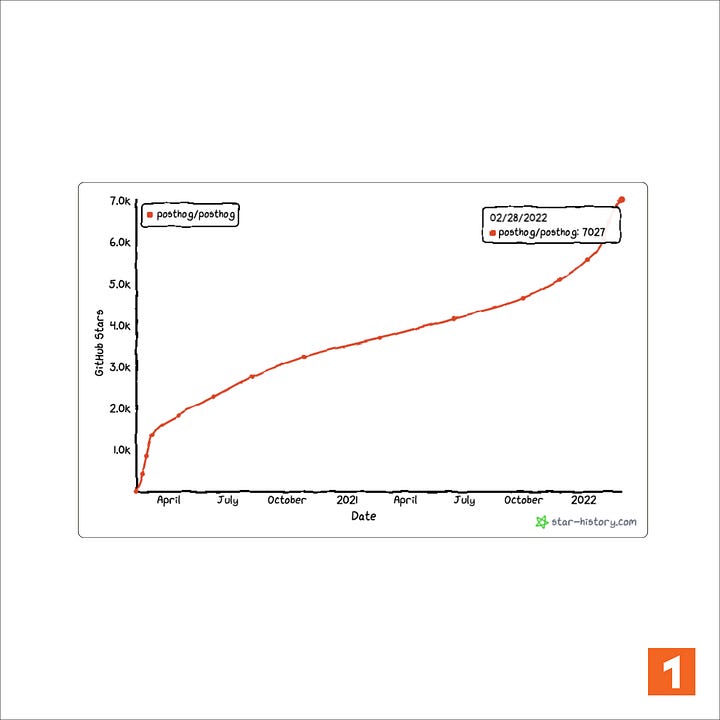

2. Ran GitHub star campaigns to keep the project visible to open-source enthusiasts.
They turned it into a repeatable growth channel by running regular star campaigns, including:
Black Friday campaign
Valentine’s Day campaign
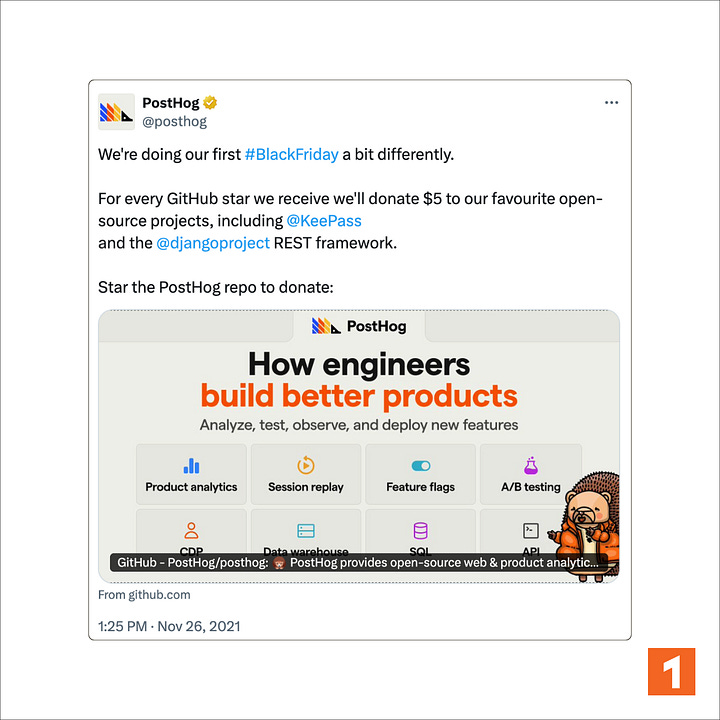
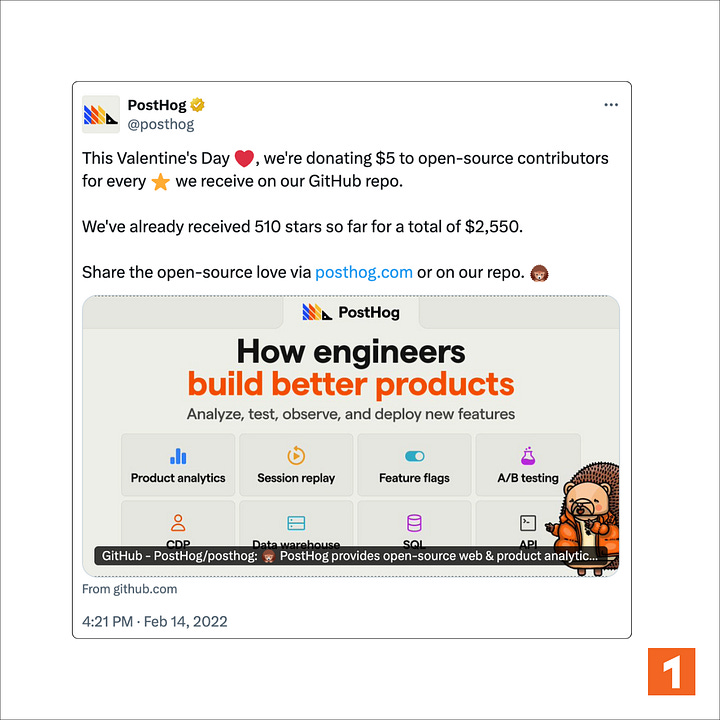
This helped them increase the number of stars, and contribution to the project. Within a year, they crossed 4,000 stars, and 40+ contributors. Today, the project has over 29,000+ stars and 300+ contributors.
4. The Hacker News Launch
A week later, on February 20, 2020, PostHog launched on Hacker News.
Product engineers and technical founders loved the positioning:
“Self-hosted, open-source Mixpanel/Amplitude-style product.”
The post hit the front page with over 140 upvotes in 7 hours, bringing in a new wave of signups and GitHub stars.
Similar to GitHub, PostHog didn’t treat Hacker News as just a launch platform, but as a community to engage with. It became one of their key content marketing channels, where they regularly shared posts about startups and open source.
14 of which received 100+ upvotes and the highest being 684 upvotes. And these upvotes aren’t just engagement within HN, but drove 10,000+ page visits at an average per post.
5. YC Deals
YC Deals is Y Combinator’s internal platform that offers exclusive discounts and credits to YC startups.
For PostHog, the ideal customers were product engineers and technical founders at early-stage startups. Being part of the YC network made it an obvious move to pitch to the 2,000+ companies already funded through YC.
Their reasoning was simple: YC startups are a high-quality filter — a group of fast-moving teams with real growth potential. By supporting them early, PostHog could align itself with the next generation of successful companies and grow organically through YC’s tightly connected network and the wider Hacker News community.
Their YC Deal:
One free year of PostHog Cloud with up to 10 million events per month, or a one-year enterprise license for teams that preferred to self-host PostHog.
This approach helped them onboard 50+ YC startups by 2021 and establish brand awareness across the YC ecosystem far more effectively than any traditional growth strategy.
Today 65% of every Y Combinator batch use PostHog.
6. Paid Search
While Hacker News and GitHub helped PostHog gain initial traction and build a steady stream of word-of-mouth interest, they began investing in paid search ads by late 2021 to scale revenue once they achieved product-market fit.
They started with campaigns targeting users searching for “open-source analytics software” and alternatives to SaaS analytics tools such as “Hotjar alternatives” and “Amplitude alternatives.”
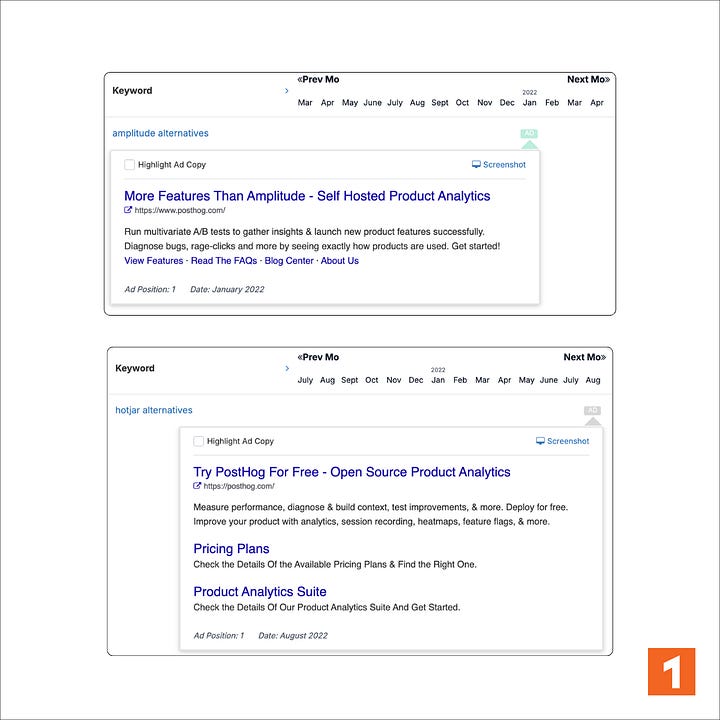
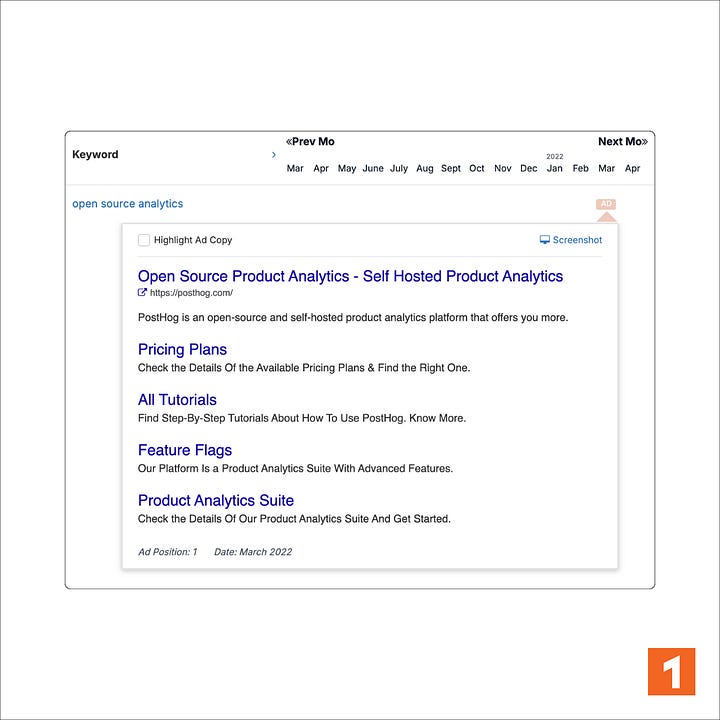
Paid ads were never at the heart of their marketing strategy. Instead, PostHog used them to kickstart and amplify the impact of what was already working — community-driven growth.
7. SEO
PostHog began focusing on SEO early 2022, after reaching clear product-market fit.
By then, they had real revenue, a proven ideal customer profile, and strong retention — in short, they had confidence that long-term bets would pay off.
Their early SEO strategy focused on bottom-of-funnel keywords, which they called “defensive SEO.”
Defensive SEO: Rank for terms that mattered most to users ready to buy who searched for,
Product comparisons (amplitude alternatives)
High-intent category keywords (open-source analytics software)
This type of content worked like sales collateral: it helped capture high-intent users while reinforcing word-of-mouth. Even if someone didn’t adopt PostHog, they might recommend it to others.
By the end of 2022, PostHog was ranking for more than 500+ keywords in the top 50.
Growth Mix
GitHub and Hacker News gave them reach, and open source helped PostHog build credibility with developers and drive adoption at scale.
Key Takeaway
PostHog’s story is a great reminder that you don’t have to get it right the first time, you just have to move fast enough to notice when something clicks.
They pivoted through 5 ideas in six months before realizing developers cared deeply about one thing: owning their data. That insight led to PostHog, open source product analytics for product engineers.
GitHub and Hacker News gave them reach. YC gave them the right network. Open source gave them credibility and adoption at scale.
Everything they did came back to one simple idea: make it useful, make it transparent, and let the community do the marketing for you.


